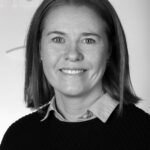Little is known about the role of dietary amino acids on men reproductive performance and gamete quality in fishes. Thus, the objective of this study was to investigate how "enhanced" feeds (EH-4, EH-5, EH-6), with modified amino acid composition, and the standard on-growing diet (DAN-EX) impact body composition , mild biochemistry, and sperm performance in male Europeans eel, Anguilla anguilla. The fatty acid composition of EH-4, EH-5, and EH-6 was similar but differed to that in DAN-EX, while amino acid composition varied between all four diets. Diet did not influence organ-somatic indices (eg HSI, GSI), while males fed EH-4 were heavier than other groups. Arginine, alanine, and lysine were the most abundant amino acids in spleen (>11%), followed by glycine, aspartic acid, valine, glutamic acid, and leucine (>5,66%). Diet impacted mild arginine, serine, proline, methionine, and histidine levels. Specifically, males fed DAN-EX, EH-4, and EH-5 had the highest percentages of arginine, while males fed EH-4 to EH-6 had higher percentages of serine. Proline was most abundant in males fed DAN-EX, EH-5, and EH-6. Both methionine and histidine were detected at low percentages (<2%), and were impacted by diet, where males fed EH-4 and EH-5 had higher percentages of methionine, and males fed DAN-EX, EH-4, and EH- 6 had the highest percentage of histidine. Spleen production increased over time, where eels fed EH-4 and EH-6 showed the highest probability of producing suitable spleen volumes (>0.5 mL) for fertilization procedures. Spermatocrit (43.1 ± 1.80%) did not differ between the diets (ranged from 37.57 to 47.21%). Dietary regime had an impact on sperm motility, such that eels fed EH-5 and EH-6 had the greatest percentage of motile cells. In addition, fish fed EH-5 and EH-6 (or DAN-EX) had the fastest swimming sperm. Spermatogenic maturity index of hormonally treated eels varied within groups but did not differ between dietary treatment groups after 9 weeks of injections (ranged from 0.54 to 0.80). The most interesting amino acids to scrutinize from PCA plots were proline, histidine, and valine as well as lysine and arginine. Here, eels with highly motile sperm had spleens with high relative proportions of proline, histidine, and valine, but were particularly low in lysine and arginine. Together, our findings add evidence that certain amino acids regulate spleen biochemistry, and that male ejaculate traits may be promoted by amino acid intake. Further studies to evaluate the effects of supplemented amino acid diets on fertilization ability and inter-linked early developmental stages are required.
Author: admin
Most fish meal and fish oil production facilities run with outdated processes, producing low-value products, typically not intended for human consumption. The aim of the study was to perform a detailed analysis of the current fishmeal and oil production processes of capelin (Mallotus villosus), and compare the key locations of both fattier and leaner pelagic raw material to identify which steps need to be improved for the production of higher-value products. Results indicated inefficient draining and concentration during the production process and ineffective break-down of the raw material, as lipid separation was ineffective in all studied species. Although the raw material initially differed in lipid content (2%–20%, depending on the species), all fishmeal produced resulted in high-lipid fishmeal (9%–14%). Chemical composition variations in the solid vapors entering the dryers suggested that drying these streams individually could lead to more process and product flexibility, which can result in higher-value products, such as fish meal and protein powders for human consumption. Practical applications: Traditional production lines of fishmeal and fish oil factories have remained the same for decades, resulting in low-quality products with a low market price. Therefore, optimization and redesign of the production processes are needed to increase the product quality. This study analyzed the lipid quality and water content in all processing steps. The current evaluations will help to shift the traditional fishmeal and fish oil production process from low-quality to high-quality products intended for human consumption by presenting a detailed analysis of the production process not available in the literature to date. Our results can act as reference values for other fishmeal and fish oil producers to assess their production quality. That includes identification of bottlenecks affecting the efficiency and effectiveness of their production processes.
This study assessed the environmental impacts of a pelagic fishmeal and fish oil production plant in Iceland with the life cycle assessment methodology. The study focused on assessing the effects of different energy sources for utility production due to the high energy intensity of fishmeal and fish oil production, as quality improved with lower cooking temperature. The environmental hotspots of three different processing scenarios were assessed, where the factory was run on hydropower (Scenario 0), heavy fuel (Scenario 1) and a composition of both (Scenario 2), from cradle-to-factory gate. Midpoint results showed that the raw material acquisition contributed the most to the environmental impact when the fishmeal factory was operating on hydropower. However, drying had the highest impact when heavy fuel oil was used for utility production. This study also demonstrated that lowering the cooking temperature from 90 to 85 °C, led to improved quality and simultaneously reduced environmental impacts during processing. This indicated that a small energy adjustment in the production can have an environmental gain, demonstrating the necessity to optimize each processing step in the fishmeal and fish oil production process both for increased product quality and minimizing environmental impacts.
Quality changes of protein and non-protein nitrogen compounds during industrial fishmeal processing of fatty pelagic species (mackerel/herring rest material blend, MHB) and lean fish (whole blue whiting, BW) were studied to identify processing steps that require optimization to allow production of products for human consumption. Samples from protein-rich processing streams throughout the fishmeal production were analyzed for proximate composition, salt soluble protein content (SSP), biogenic amines (BA), total volatile basic nitrogen (TVB-N), trimethylamine (TMA), and dimethylamine (DMA ). Mass flows throughout processing were balanced based on the total mass and approximate composition data. The quality of the final fishmeal products was highly dependent on the fish species being processed, indicating that the processes require optimization towards each raw material. The chemical composition changed in each processing step, resulting in different properties in each stream. Most of the non-protein nitrogen compounds (including BA, TVB-N, TMA, and DMA) followed the liquid streams. However, the concentrate contributed less than 20% to the produced fishmeal quantity. Mixing of this stream into the fishmeal processing again, as currently carried out, should thus be avoided. Furthermore, the cooking, separating, and drying steps should be optimized to improve the water and lipid separation and avoid the formation of unwanted nitrogen compounds to produce higher-value products intended for human consumption.
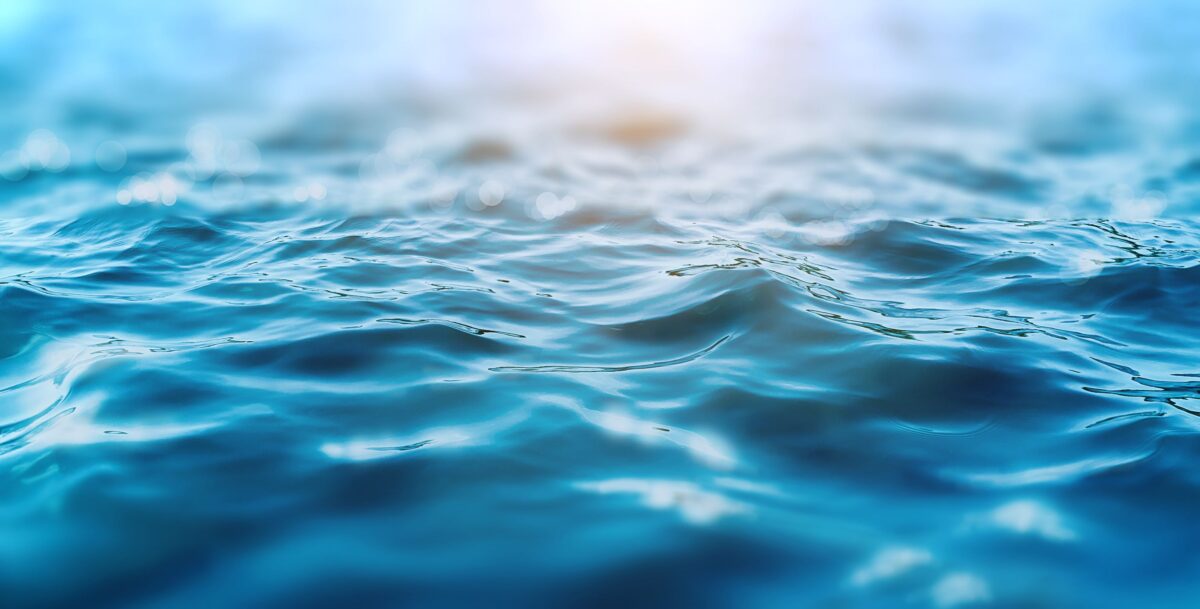
AG Fisk conference and workshop, October 11th, 2023 | Grand Hotel Reykjavík | Live stream
On October 11, 2023, a conference and workshop on aquaculture was held with an emphasis on the utilization of side streams and sustainable feed production.
The conference was organized by AG Fisk, but it is a forum for consultation on fisheries issues that operates across all the Nordic countries for the directive of the Nordic Council of Ministers, which Iceland led in 2023.
Below you can see the program of the event. If you click on the selected lectures, slide presentations will appear.
- 08:30 – 9:00 OPENING CEREMONY
- Opening words – Birgir Örn Smárason, Research group leader, Matís
- Welcome address From the Ministry of Food, Fisheries and Agriculture – Jón Thrándur Stefánsson
- 09:00 – 10:30 SESSION 1 – TOWARDS SUSTAINABLE FEED INGREDIENTS
- Keynote Address: Environmental impact of aquaculture – Friederike Ziegler, RISE, (Se)
- Economics and policy regarding alternative proteins as fish feed – Sveinn Agnarsson, Sjókovin, (FO)
- Blue-Bio, Alternative proteins for fish feed – Rasa Slizyte, SINTEF (No)
- New Raw Materials for Salmon Feed: Realistic Expectations – Paul Morris, Mowi Feed (No)
- Single cell pekilo protein for aquafeed – Heikki Keskitalo, EniferBio (Fi)
- Oleaginous yeast making lipid in sustainable use of agriculture and forestry byproducts – Jana Pickova, SLU (Se)
- 10:35 – 11:10 Coffee break
- 11:10 – 13:00 SESSION 2 – DIVERSE PRODUCTS FROM SIDESTREAMS
- Keynote Address: Challenges for 100% use of sidestream – Pavle Estrajher, Arctic Protein (Is)
- Exploration of the environmental mitigation potential by farming blue mussels in connection to fish farms. Case study in a Faroese fjord – Gunnvør á Norði, Fiskaaling (Fo)
- Sidestreams use from land-based aquaculture to biochar factory – Rúnar Þórarinsson, Jarðlíf (IS)
- Salmon blood – a diamond in the rough – Runar Gjerp Solstad, Nofima (No)
- Bioretur – Fish Sludge & Circular Economy – Hermund Ramsøy, Bioretur (No)
- High value biochemicals – Sumesh Sukumara, Biosustain (Dk)
- Unbroken – A success story – what have we learned? – Danielle Neben, Unbroken (Is)
- 13:00 – 14:00 Lunch break
- 14:00 – 16:00 SESSION 3 – WORKSHOP
- Round table discussions
- Close-up
- 17:00 – 18:30 RECEPTION – LAX-INN
The cost was ISK 5000 and refreshments were included.
Lectures were also streamed.

In the past few weeks, numerous farmed salmon have been caught in many parts of the country, which indicates that farmed salmon in salmon fishing rivers has become quite widespread in Iceland. Fish farming has been practiced in this country for decades to increase the number of fish in rivers. That culture is based on fishing for hatchery fish from the respective rivers and rearing the fry in hatcheries.
It is important to ensure that farmed salmon do not find their way into these farms, as this can greatly increase the genetic mix in rivers. In many cases, salmonids are easily recognized by their appearance, eg damaged fins and destroyed gill bars. It can be much more difficult to recognize salmon that have escaped early in the breeding process, as the traditional visual characteristics are not as obvious. Visual evaluation is not sufficiently reliable to remove fish originating from aquaculture. Genetic analyzes are therefore necessary to ensure that fish used for fish farming are wild. Matís has been carrying out genetic analysis of salmon for years, both for basic research but also to trace the origin of salmon caught in rivers.
The genetic analyzes that Matís offers are based on 14 genetic markers, the so-called Salsea set. These genetic boundaries are extremely sensitive and have been used to assess the population structure of Icelandic salmon. The genetic boundaries have also proven to be useful for tracing salmon caught as bycatch in pelagic fisheries off Iceland to rivers in Europe and Iceland. The genotyping kit is also sensitive enough to distinguish between farmed and wild salmon and can detect first-generation hybrids. A first generation hybrid is the offspring of wild salmon and farmed fish.
Matís offers fishing partners genetic analysis of fish to be used in fish farming.
Those interested are advised to contact Dr. Sæmund Sveinsson, specialist in genetics.
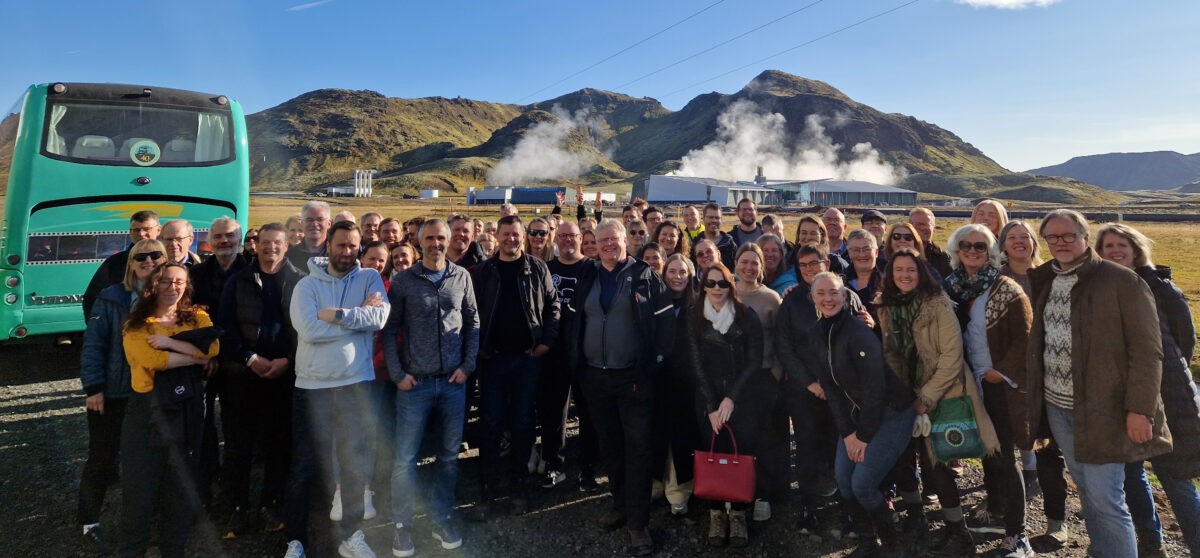
On Thursday, September 21, the Matís staff took a step forward and went on an autumn trip east of the mountain. The day was sunny and beautiful and Ölfus looked his best.
The group's first stop was Rádhús Ölfuss in Þorlákshöfn. There, Kolbrún Hrafnkelsdóttir and Rúnar Þórarinsson welcomed us with coffee and donuts and introduced the group to the Ölfus Cluster, Grænan iðngarð, the activities of First Water and Jarðlífs and other exciting things going on in this rapidly growing municipality. It's safe to say that there was enough!
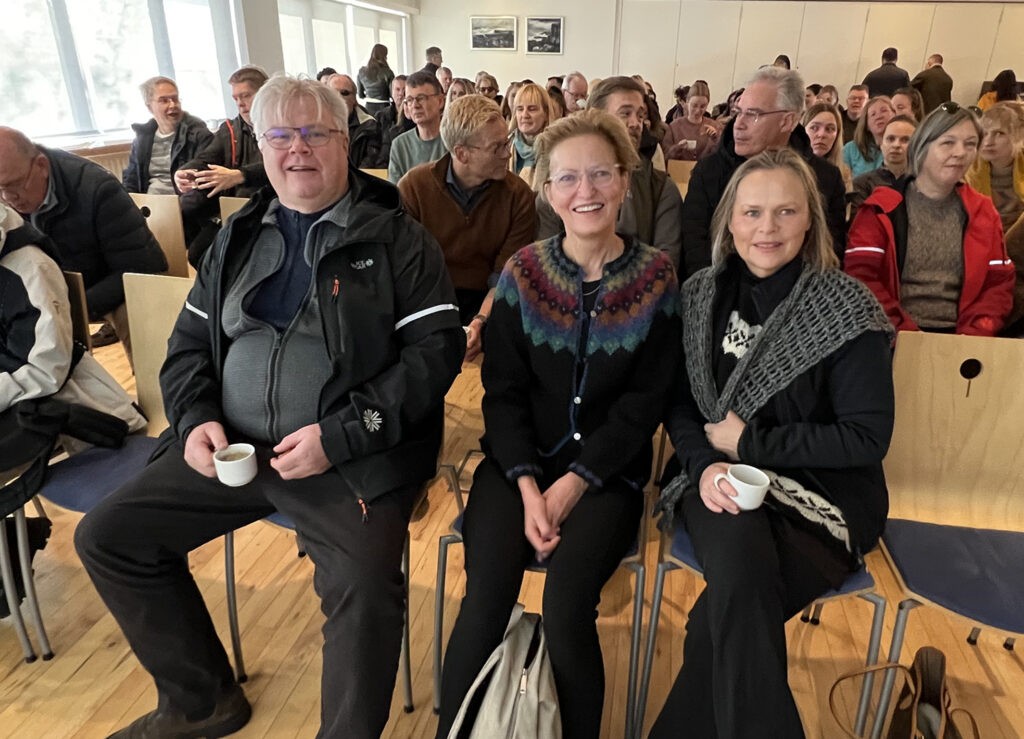


After the presentation, there was a field trip to the area of First Water, which is a closed land-based plant that is currently undergoing rapid development. It was impressive to walk around the area, which is huge and full of possibilities. Rúnar guided the group and showed how the structure has been in recent months and what the plans are for the coming seasons.

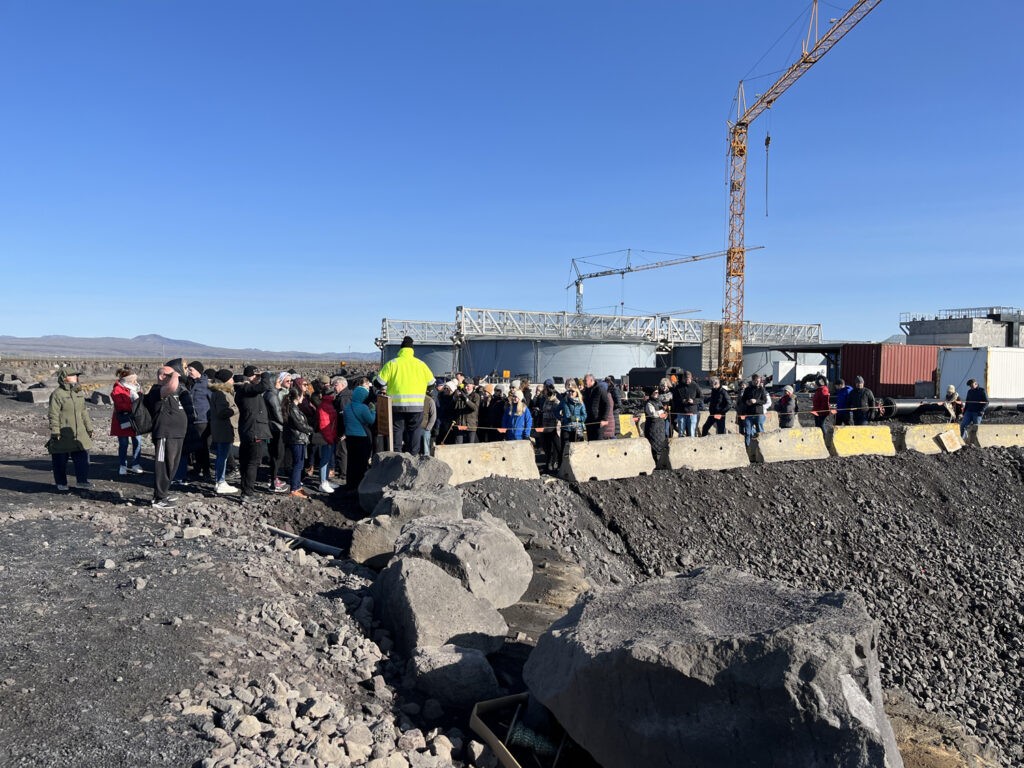

After a walk around the area, we stopped at the restaurant Hafinu Bláa, located at the Ölfusár estuary between Eyrarbakki and Þorlákshavn. Delicious lobster soup and freshly baked bread were served there and the group could enjoy the view and the mild weather in this pleasant place.
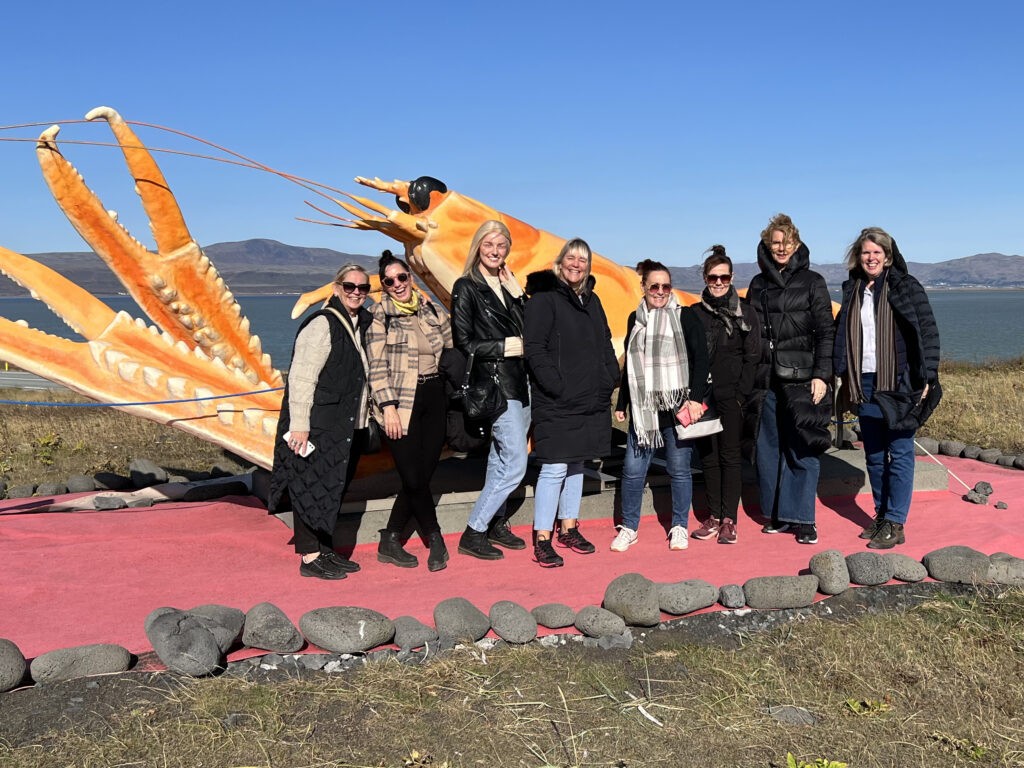
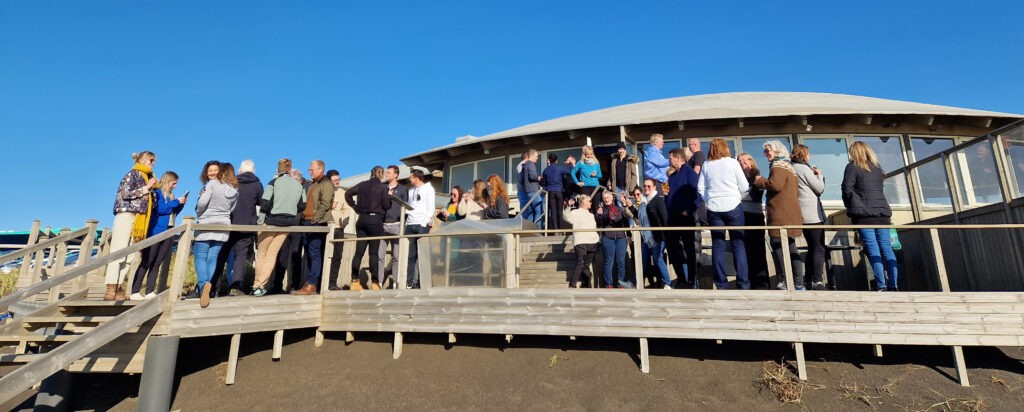
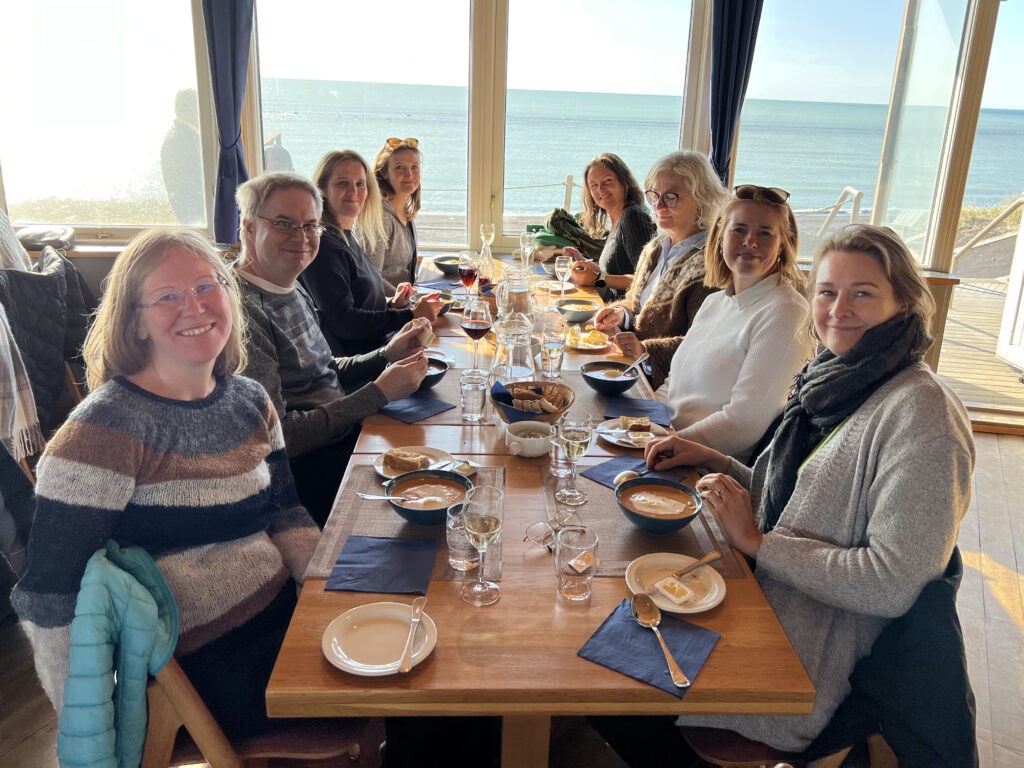
From there the path went up to Hellisheidi, in the house of Orku Náttúrunn and VAXA. Kristinn Hafliðason, or Kiddi in VAXA as he is fondly called, told about the structure and operations of the company, which reuses water and energy from the Hellisheiðar power plant in order to cultivate microalgae and produce sustainable food from them. The group got to walk around the production hall, which is a very pleasant experience because the whole area is bathed in purple light in which the microalgae thrive.
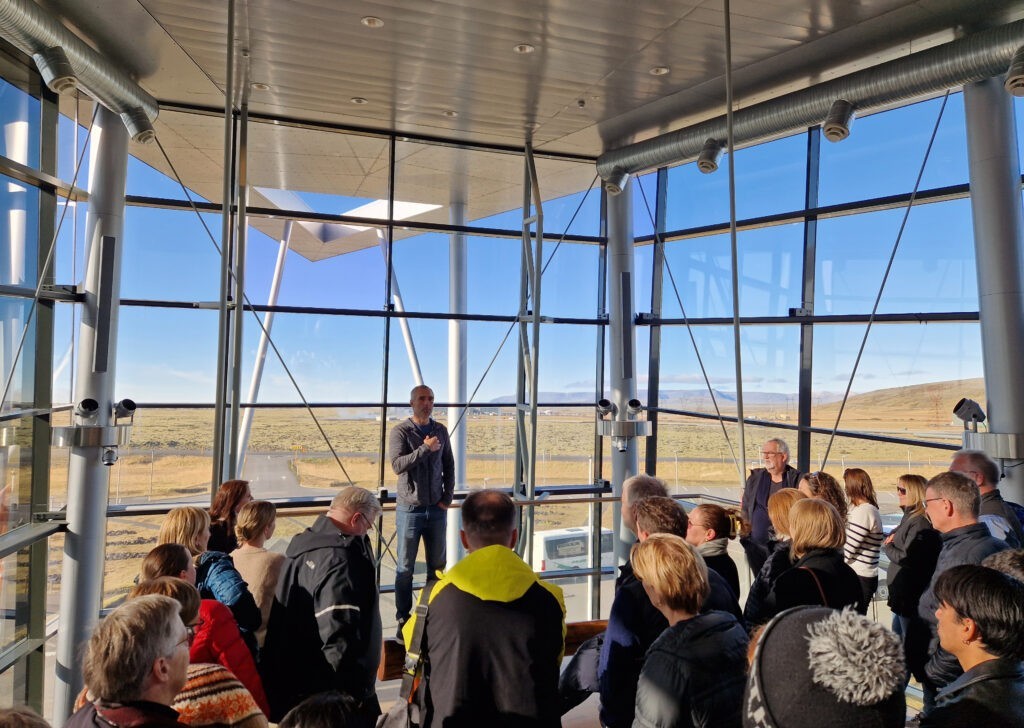
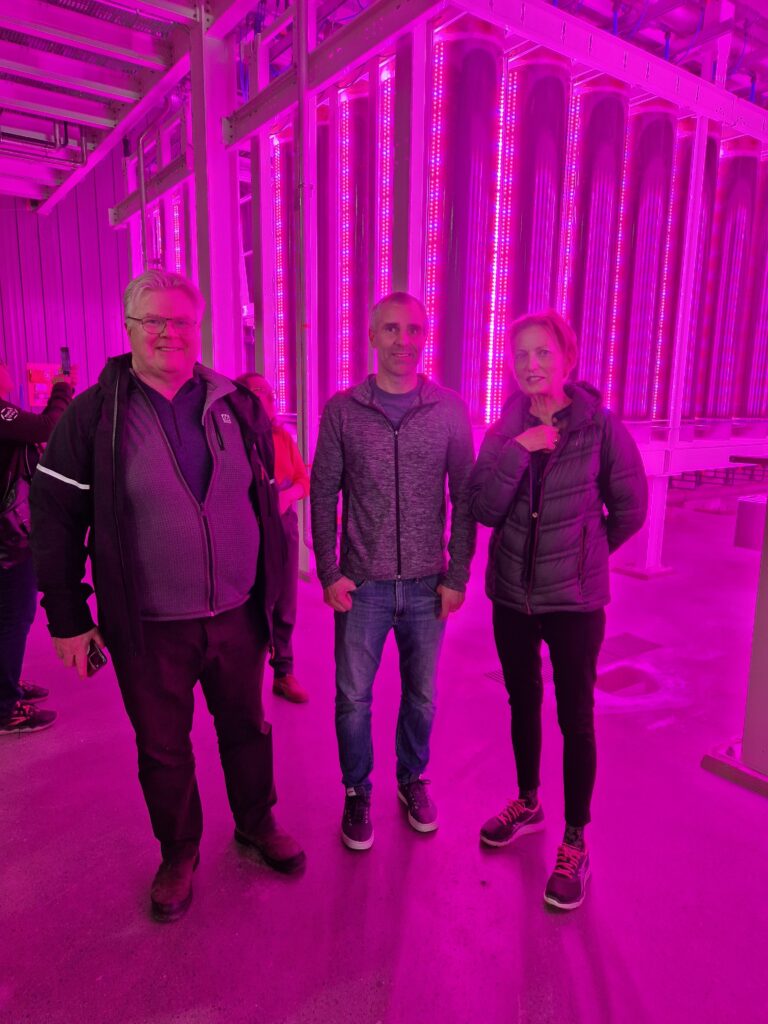


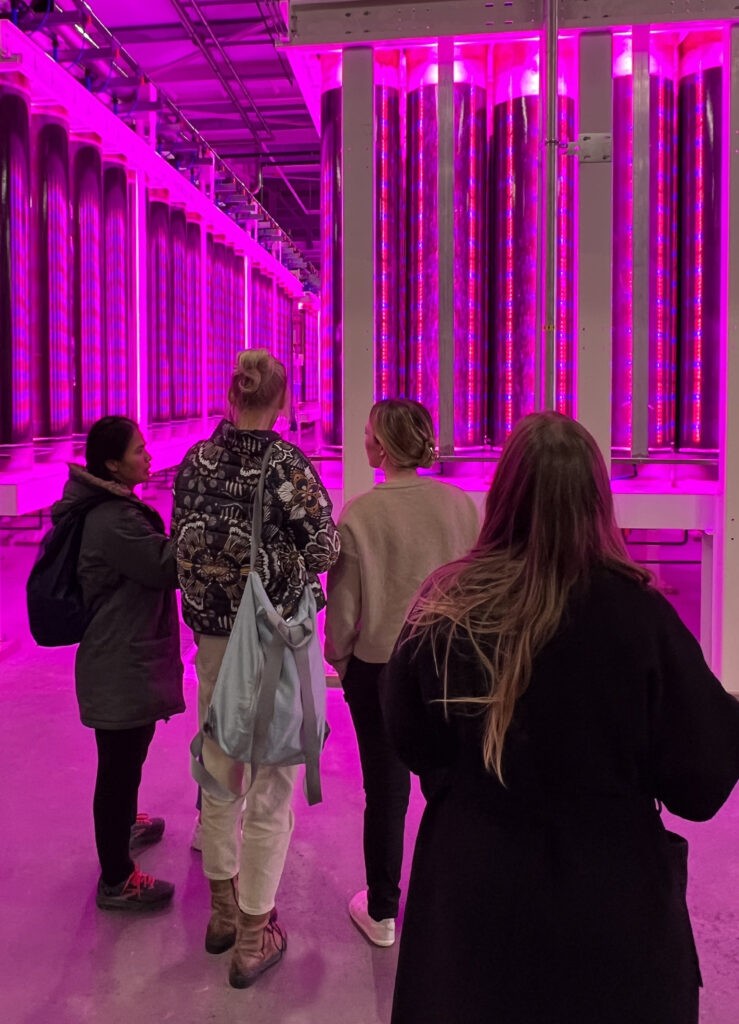
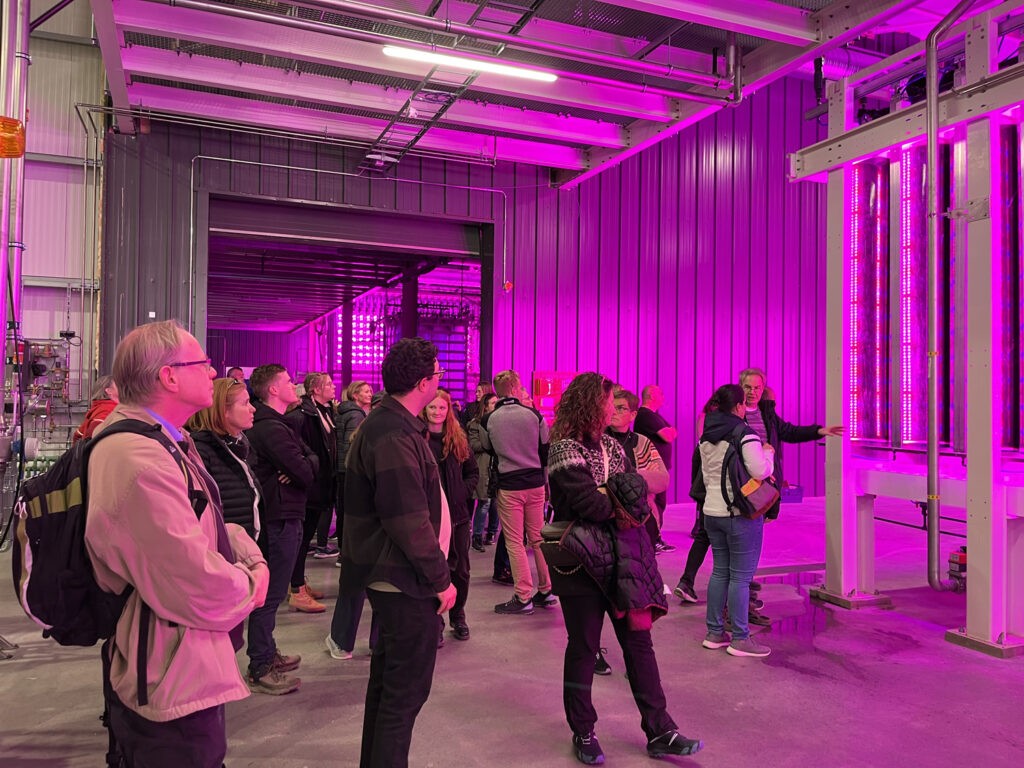
The group ended the day by having a cup of coffee at Hellisheði and heading back to Reykjavík.
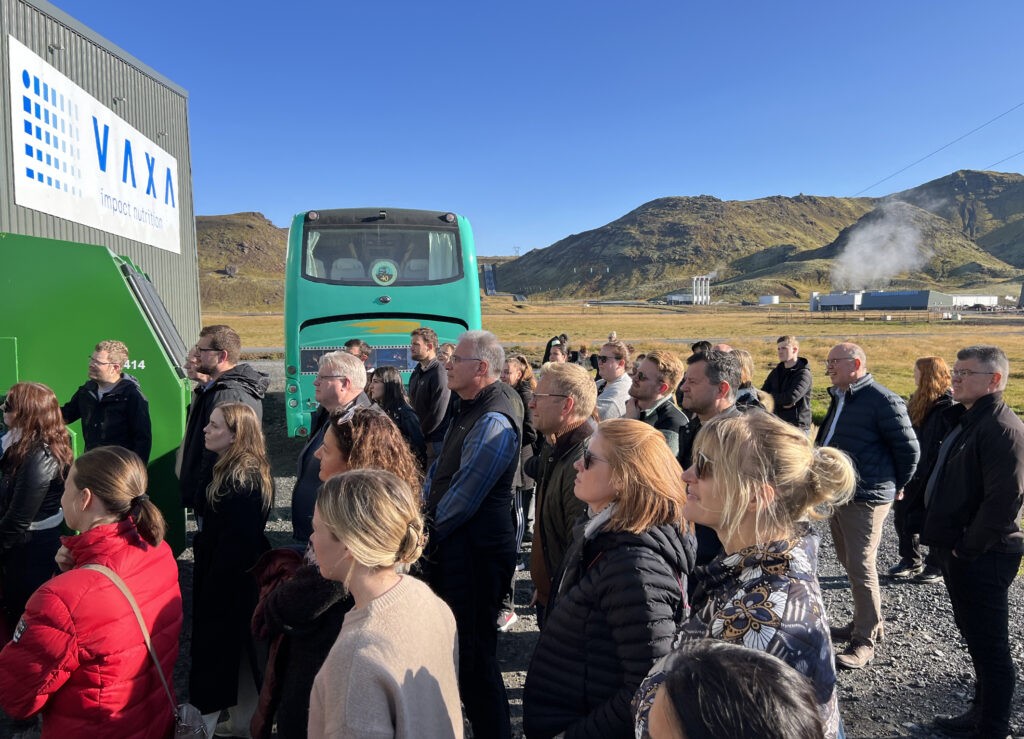

Matís' staff would like to express their thanks for the wonderful reception in Ölfus.
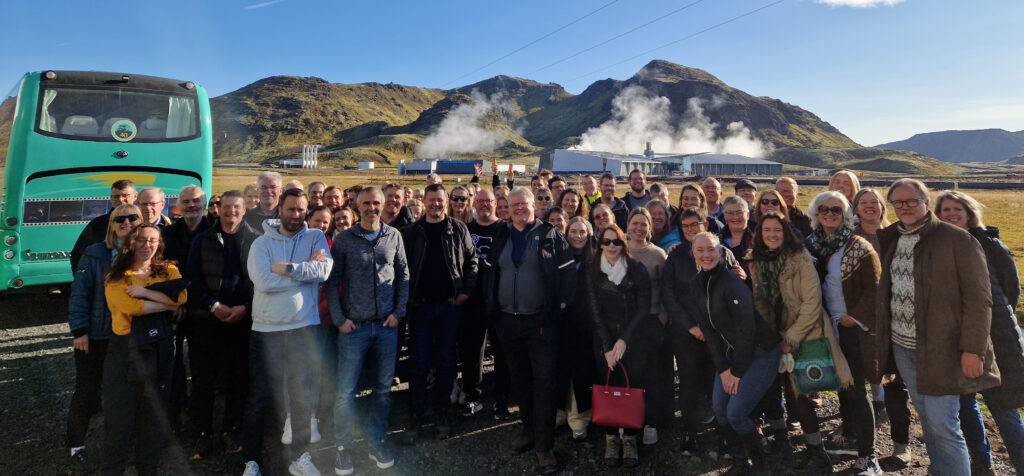
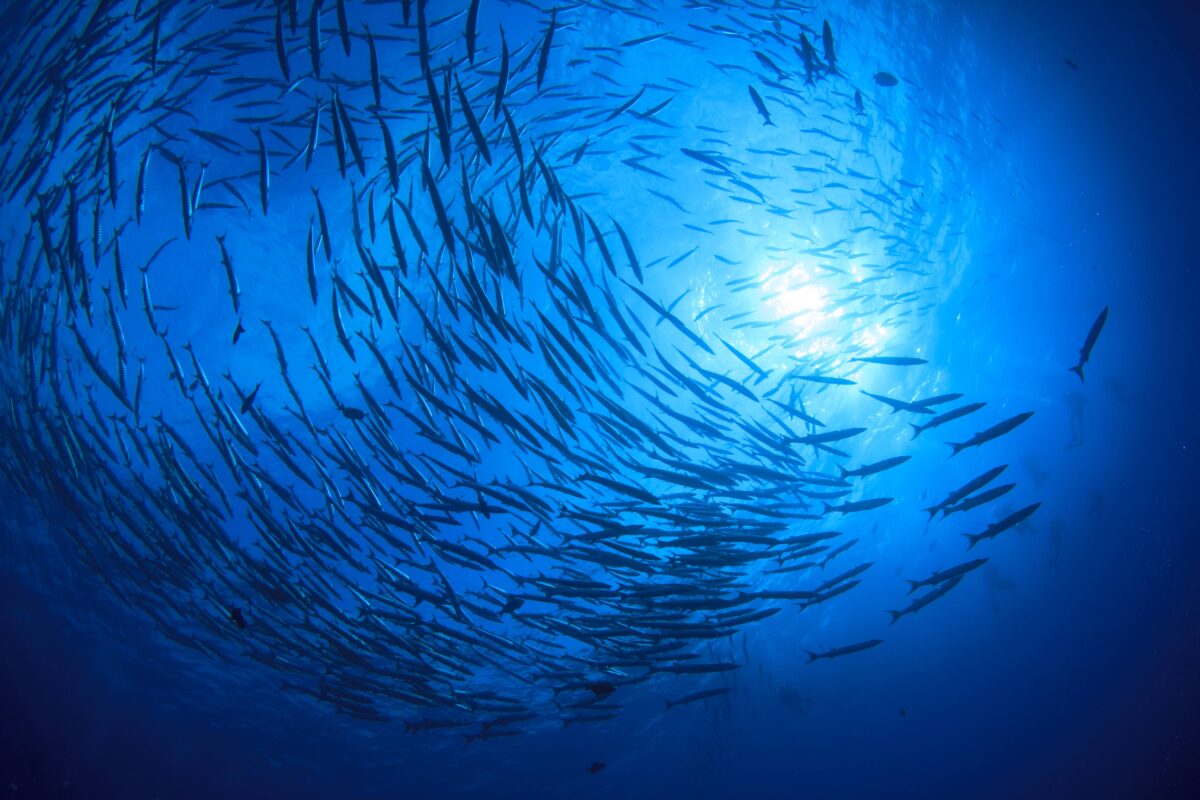
Last September 13, a Nordic conference was held on the environmental impact of the fishing industry and the energy exchange in the sector. The conference was organized by AG Fisk, but it is a consultation forum on fisheries issues that operates across all the Nordic countries for the directive of the Nordic Council of Ministers, which Iceland leads in 2023.
Jónas R. Viðarsson, manager of value creation at Matís, chaired the event on behalf of AG-Fisk. Many of the Nordic countries' leading experts on the issue gave talks, as well as Svandís Svavarsdóttir, Minister of Food, gave an opening speech. The conference was held in English.
The conference was recorded in its entirety and the recordings are available in the players below.
Photos from the event:
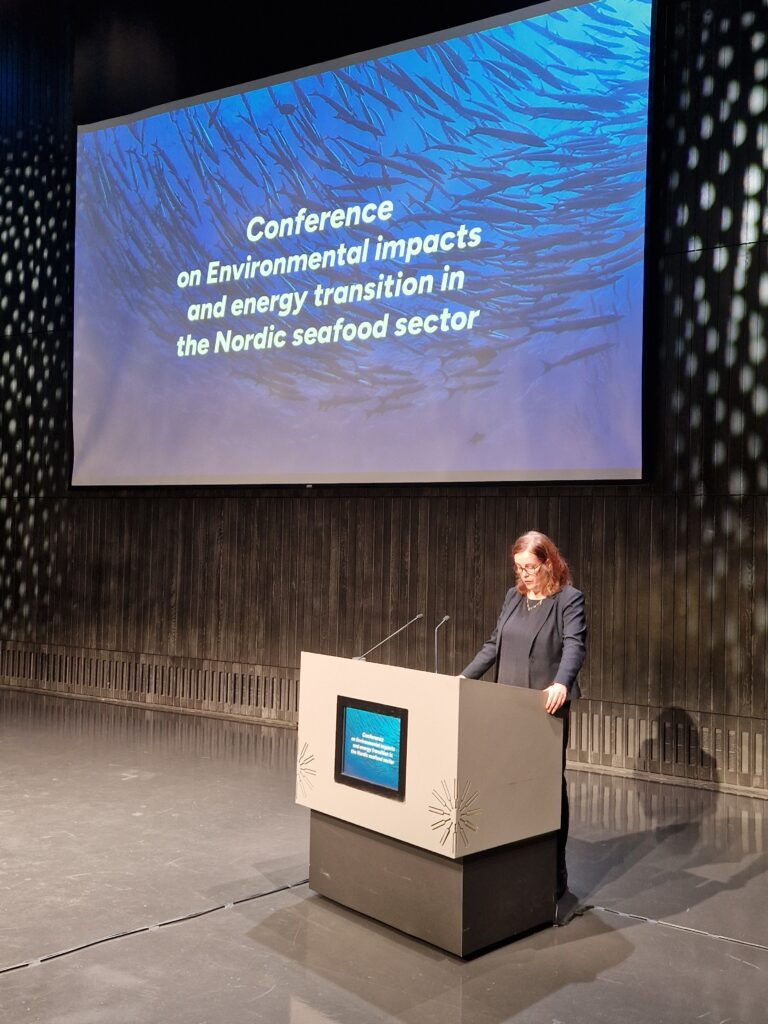
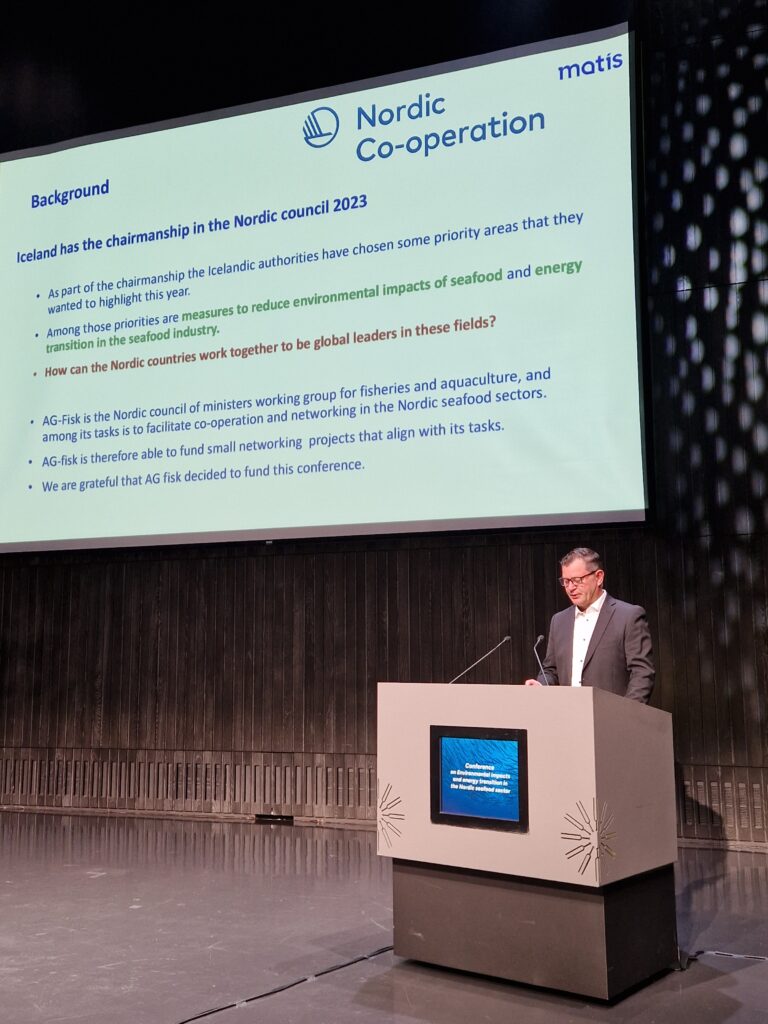
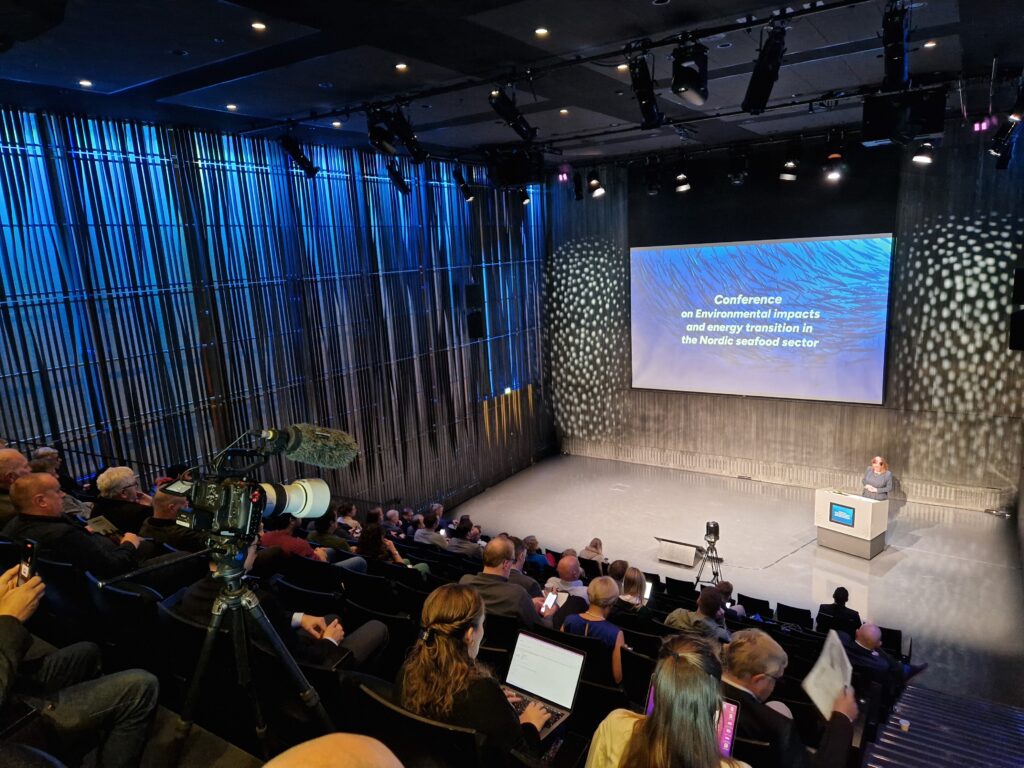
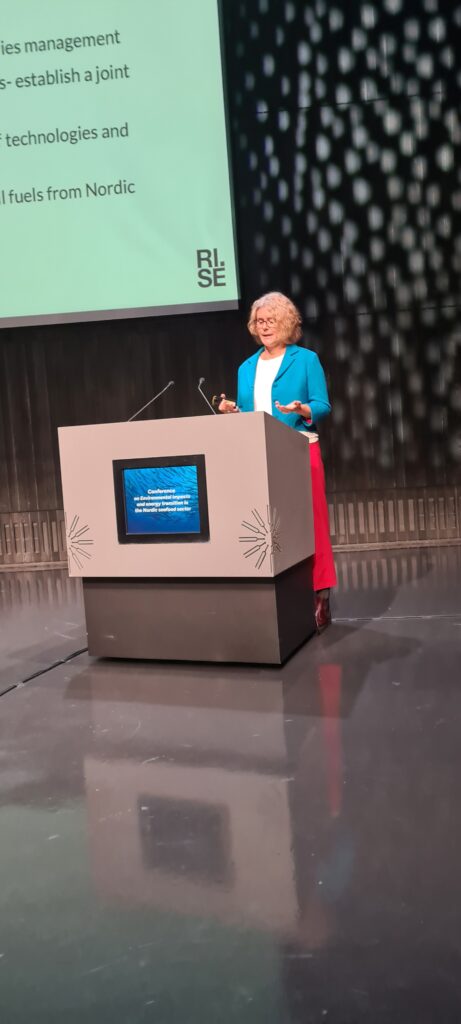
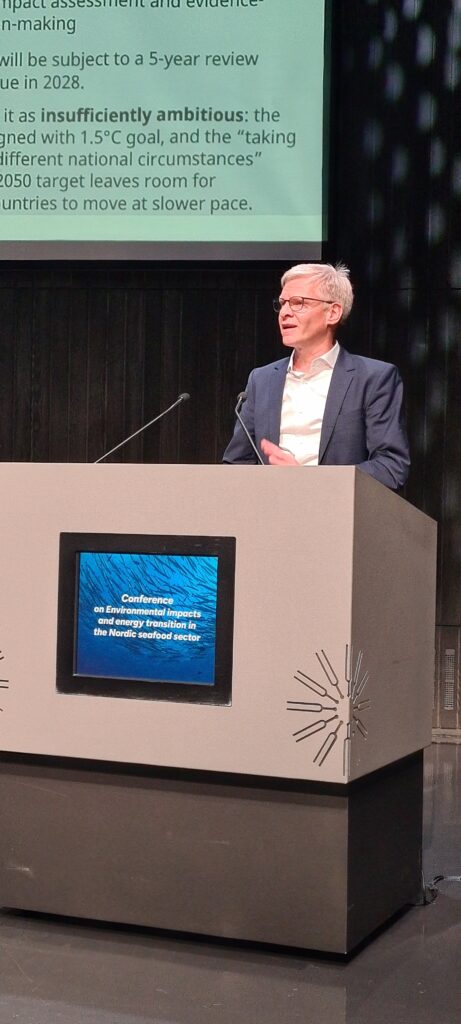


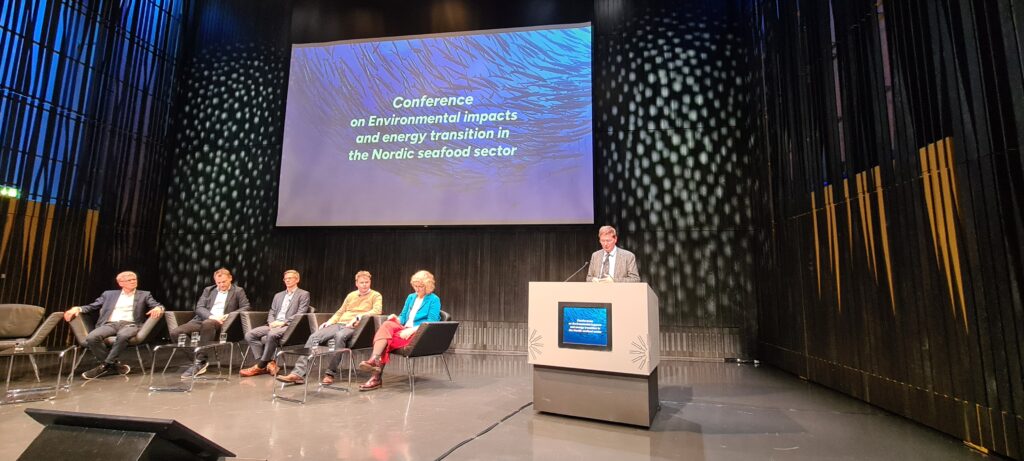
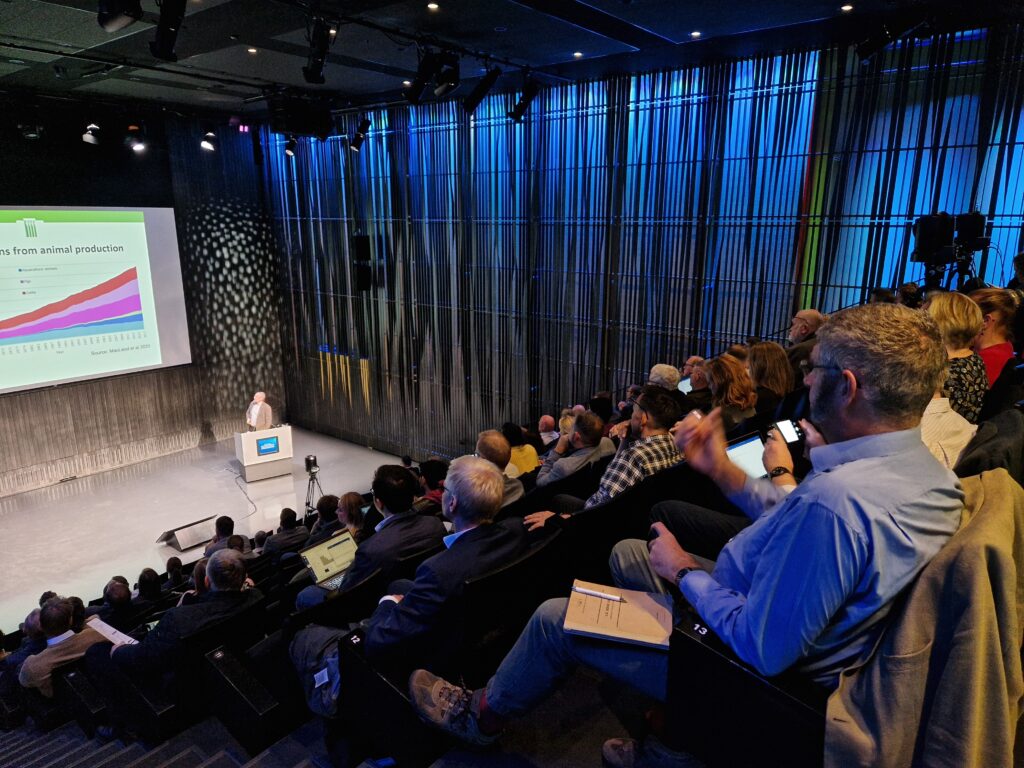
Recording from the conference, first part:
Recording from the conference, part two:
Recording from the conference, part three:
More information about the event and slides from the presentations can be found on his project page here: Environmental impacts and energy transition in the Nordic seafood sector
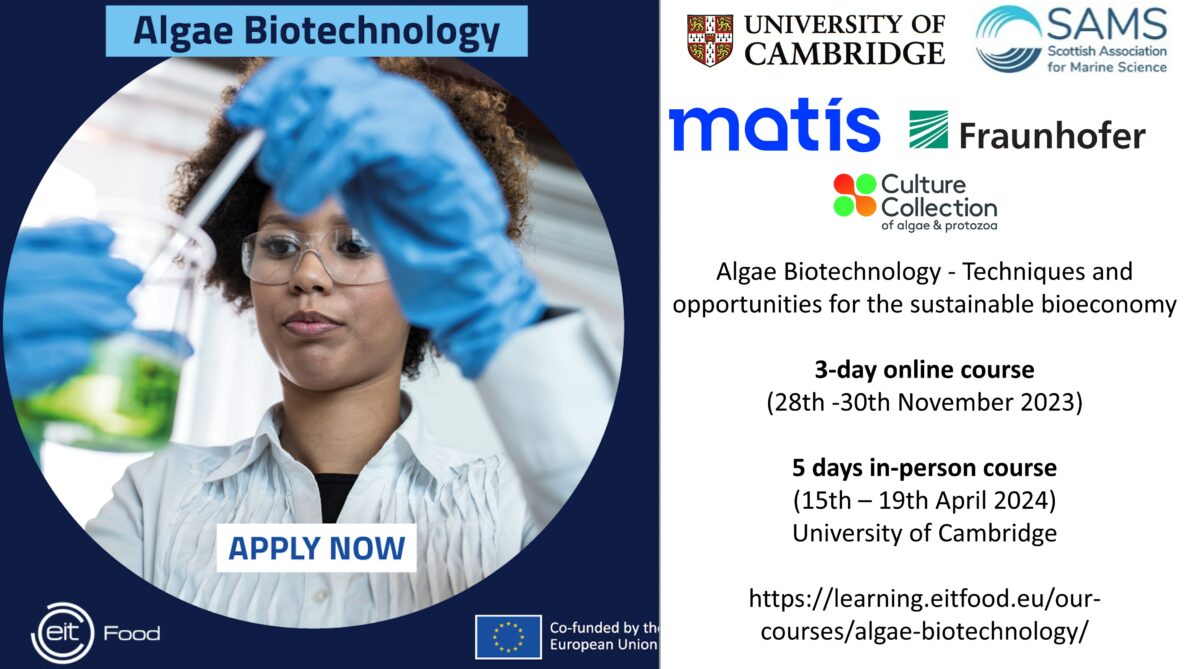
In collaboration with the University of Cambridge, SAMS (Scottish association for Marine Science), Fraunhofer and the Culture Collection of algae & protozoa, Matís offers courses in algae biotechnology. The courses are part of The EIT-food project Algae Biotechnology
The aim of these courses is to provide basic training and education in algae biotechnology. The cultivation of algae, their growth and biotechnology in laboratories and in experimental facilities will be discussed. Participants will get an insight into the world of experience of experts from both an industrial and an entrepreneurial perspective. This can help participants to start or improve their own activities related to algae.
Courses are offered both online and in person and will ensure the development and strengthening of a network for all participants from around the world.
The course is open to anyone with a BA, MSc or PhD degree or significant experience in the aquaculture sector or the food system, especially people from countries within the EU and EIT Food related countries.
Three ways to participate in the course:
- A 3-day online course (28 -30 November 2023) followed by a 5-day on-site course (15 – 19 April 2024) at the University of Cambridge, Algal Innovation Centre, UK. (30 available places)
- Only 3-day online course (November 28-30, 2023) (60 available places)
- Only a 5-day on-site course (15 – 19 April 2024) at the University of Cambridge, Algal Innovation Centre, UK. (30 available places)
More information about the course as well as registration information can be found on the project's website here: Algae Biotechnology
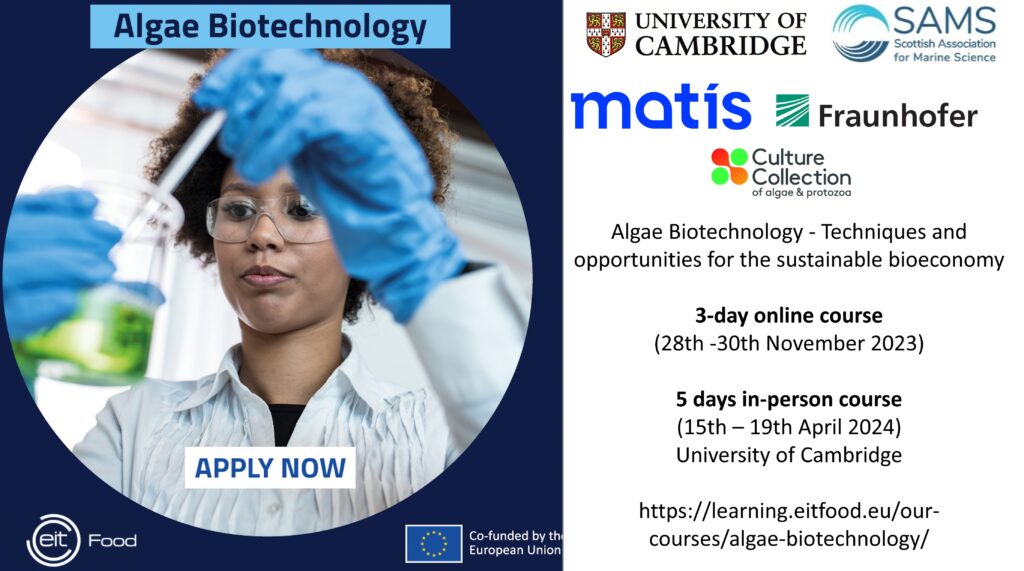
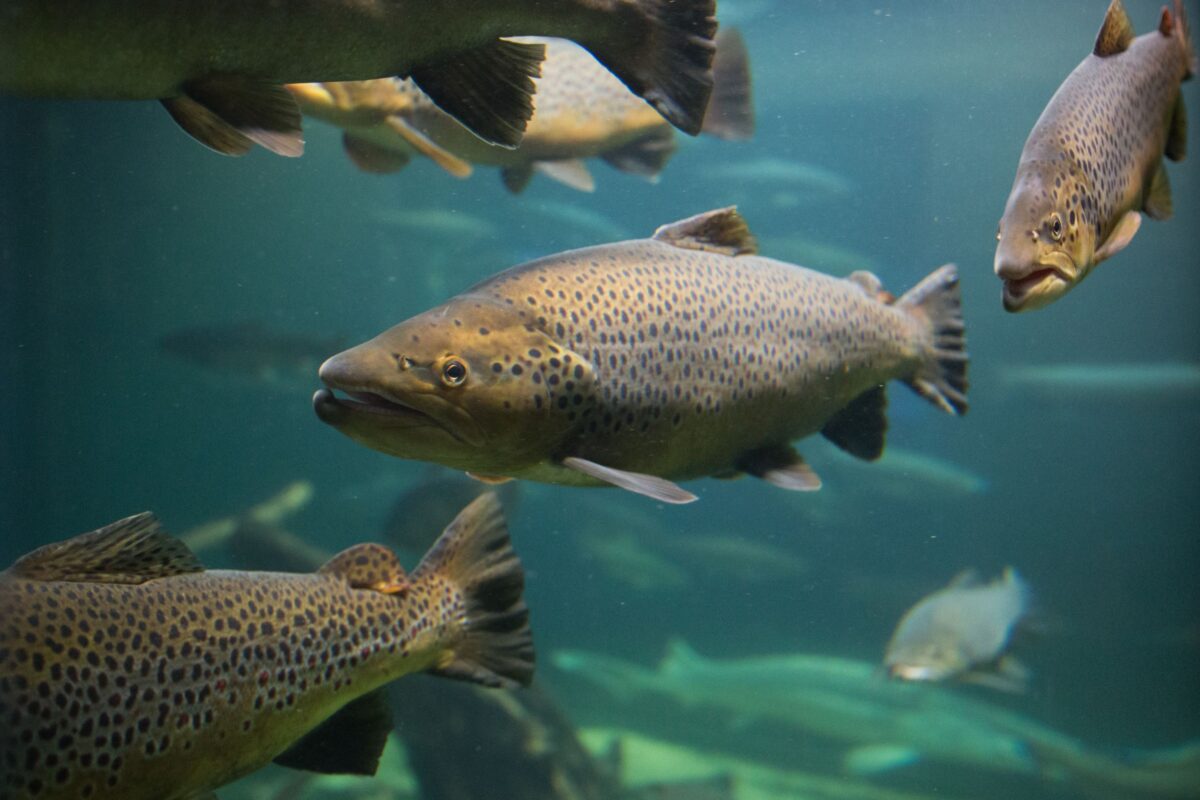
A lot has been done in Matís genetics laboratory in recent days with analyzes of supposed farmed salmon that have been caught in a number of rivers in recent weeks.
Matís has recently received salmon samples from the Norwegian Marine Research Institute for genetic research. In Matís' laboratory, genetic material is isolated and so-called delayed sequence analysis is performed. The Norwegian Marine Research Institute's experts then use the results to check whether the salmon is wild or farmed. If it turns out to be of fish origin, the genetic data is used to trace the origin of the fish. It is important to maintain knowledge, equipment and skills in order to be able to carry out these analyzes in this country. It ensures short transmission paths as well as promotes safer and faster analysis of samples. Finally, it can be mentioned that Matís and the Norwegian Marine Research Institute are jointly working on the development of a set of genetic parameters to assess genetic admixture from farmed salmon in Icelandic stocks.
Over the years, Matís has worked on many research projects on the genetics of Icelandic salmon. Research has shown, among other things, that populations in Icelandic rivers are diverse and that there are great genetic differences between and within watersheds.
See also:


